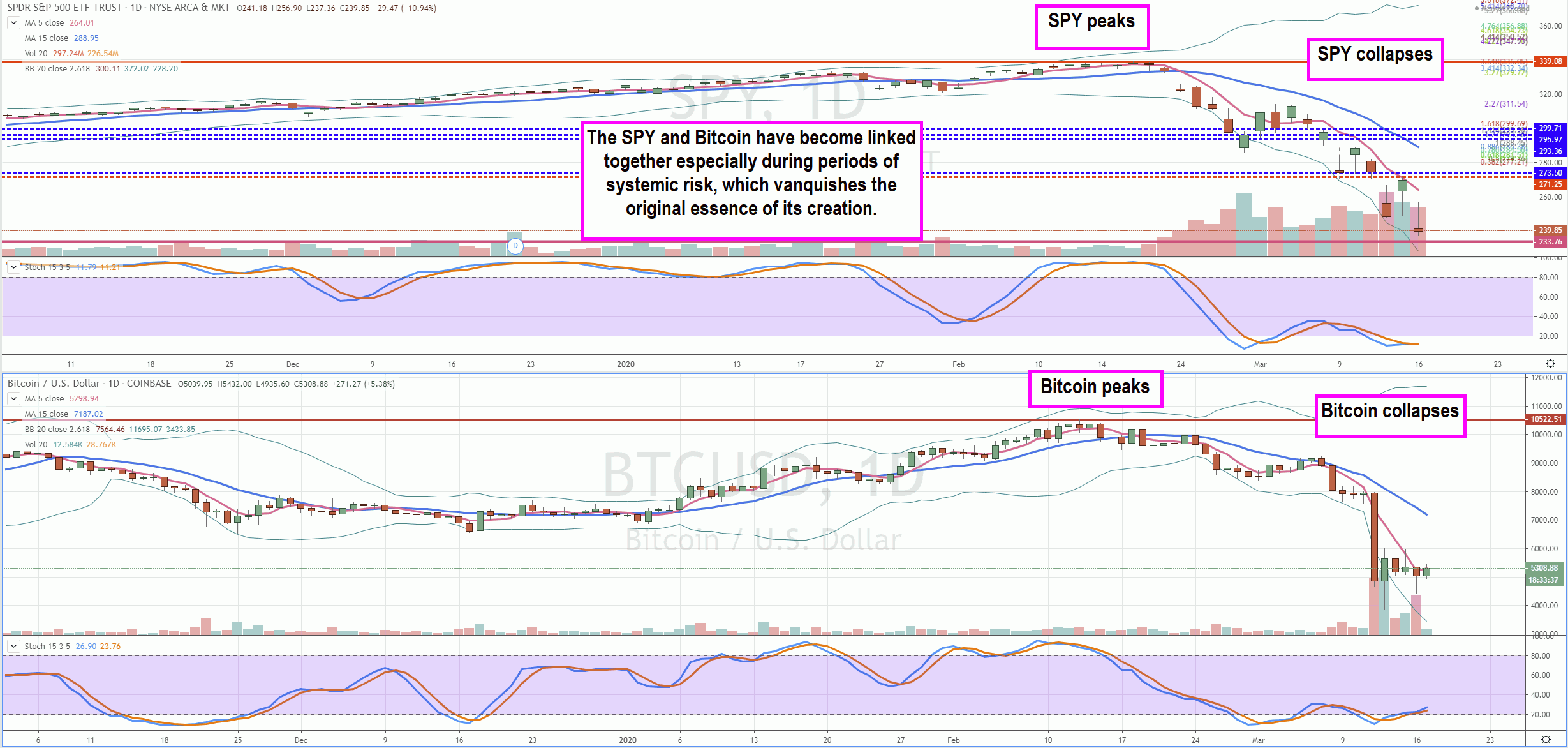The storied history of Bitcoin (BTC) reveals how the very first block aptly referred to as the Genesis Block, was mined by its anonymous creator Satoshi Nakamoto on January 3, 2009. On that Genesis Block was the inscription, “The Times 03/Jan/2009 Chancellor on bringing of the second bailout for banks”. This referring to the London Times headline during the financial meltdown. The message underscored the essence of Bitcoin as a store of value that circumvents the reach of crony politicians, governments and manipulative central banks. The “proverbial shot heard around the world” occurred in late 2012 when Cyprus politicians contemplated measures to save it’s over-levered banking system by taxing or seizing a portion of bank deposits. Angry citizens quickly took matters into their own hands
converting their cash to Bitcoin. These actions validated Bitcoin as a depository in times of crisis and simultaneously fueled its ascent ushering in the cryptocurrency movement. What was created to be a digital store of value uncorrelated to financial markets especially in times of extreme uncertainty has lost its way. This is leaving many investors to question why Bitcoin is no longer a hedge against falling equity markets especially during a
black swan event like the 2020 coronavirus pandemic.

Institutional Participation
The very financial institutions that Bitcoin was created to circumvent are the same participants it needed in order to amass greater liquidity, legitimacy and (perceived) stability. Most importantly, having institutional participation could help with regulatory and mainstream acceptance. This led to the creation of Bitcoin futures on the Chicago Mercantile Exchange and paired BTC to multiple currencies. With more “big money” coming in, the more “institutionalized” it become. Since the market capitalization was still tiny, it had to be linked to something liquid. Algorithmic trading programs paired Bitcoin to the world’s most liquid futures trading instrument, the S&P 500 futures or the S&P 500 index (NYSEARCA: SPY). This link with the S&P 500 is a virtual ball and chain on the way down as evidenced by the greater than (-50 percent) collapse from its highs even as the S&P 500 dropped (-30 percent).
Speculators and Margin
The rise of Bitcoin sucked in waves and waves of global speculators driving up prices to an all-time high of 19,892 on Dec. 17, 2017, before the bubble burst. Nearly a full year later, Bitcoin finally bottomed out on Dec. 15, 2018 at lows of 3,129, plunging (-84 percent) from the highs. The SPY plunged nearly (-20 percent) that month on Federal Reserve Chairman Jerome Powell’s quantitative tightening comments. Bitcoin plunged along with the SPY, not acting as a hedge in any form. Instead, Bitcoin made a bottom with the SPY and proceeded to recover in unison. The correlation with the SPY strengthened at this point as Bitcoin recovered with the SPY, though not in lockstep. Many cryptocurrency exchanges have enabled Bitcoin margin trading providing upwards of 100X leverage, which also enables short selling. This lends to an explosive situation during large price drops with margin calls and forced liquidation as evidenced by the nearly (-40 percent) single-day drop on March 12, 2020. Speculators were shaken and stopped out left and right.
Bitcoin Fails During Systemic Risk
In the prior two-years where the SPY took rapid and dramatic drops (-15 to -30 percent) in less than a month’s time, December 2018 and March 2020, Bitcoin collapsed with the SPY. Where Bitcoin was expected to be a haven during periods of systemic risk, it provided no protection nor hedge. While there are many explanations including stability issues with the various exchanges, the reality is very simple. The dramatic volatility in Bitcoin and the lack of stability has stifled its acceptance with consumers as a means of commerce. There is not enough confidence especially during times of systemic risk. When you need to buy toilet paper, you need cash, not Bitcoin. In a black swan event, the rush to the liquidity gates also has shown there is still not enough liquidity to inspire confidence as a store of value. While originally created to be decoupled with global financial markets, the need for liquidity and institutional participation has mutated it into a sympathy play with the S&P 500. This catch-22 is the foundation for Bitcoin’s positive correlation.
Before you make your next trade, you'll want to hear this.
MarketBeat keeps track of Wall Street's top-rated and best performing research analysts and the stocks they recommend to their clients on a daily basis.
Our team has identified the five stocks that top analysts are quietly whispering to their clients to buy now before the broader market catches on... and none of the big name stocks were on the list.
They believe these five stocks are the five best companies for investors to buy now...
See The Five Stocks Here
Learn the basics of options trading and how to use them to boost returns and manage risk with this free report from MarketBeat. Click the link below to get your free copy.
Get This Free Report
Like this article? Share it with a colleague.
Link copied to clipboard.